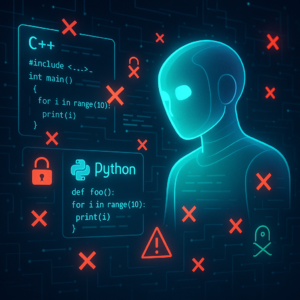Revolutionizing Art: How AI is Mastering Style Variations Through Images

Revolutionizing Art: How AI is Mastering Style Variations Through Images
Art and style are as diverse as the cultures that create them. While traditionally we might think of styles in terms of color and brushstrokes, there’s a whole other dimension lurking beneath the surface: semantics, the underlying meaning or theme of the subject being portrayed. But how on Earth does one standardize something as dynamic as style, especially when AI is involved? Enter the world of zero-shot style-specific image variations—a fascinating leap forward in blending art and technology.
Unveiling the Magic: Style Beyond Colors and Brushstrokes
Art is more than just a pretty picture. It’s a medium through which different cultures and individuals express their perspectives. Whether it’s the intricate details of a Chinese ink painting or the vibrant chaos of an abstract style, each artwork tells a unique story. But what if we could use AI to capture the essence of these stories, transforming images across different styles without losing their original meaning?
Jinghao Hu and his team of researchers have delved into this fascinating challenge, proposing a zero-shot learning technique that seamlessly transitions between styles without requiring pre-paired data sets for training. Intrigued? Let’s break it down.
Breaking It Down: From Image to Text and Back Again
Think of the process as a journey—a journey from an image, through the lens of text, and back into an image. Here’s how it works:
-
Image to Text: Utilizing advanced vision-language models like BLIP, an image is first described in text. The model identifies and articulates the objects and their spatial relationships within the image. This step is crucial in separating the content from the style.
-
Text Tuning: Enter ChatGPT, our trusty AI wordsmith. It takes the initial style keyword (such as “Chinese ink painting”) and concocts a detailed description, harmonizing it with the decoded image content. This melding of context and creativity is what enables our AI to inject a style’s essence into the text description.
-
Text to Image: Armed with a rich text prompt, a Diffusion model like Stable-Diffusion-XL takes the stage, redrawing the image in a specified style while ensuring semantic integrity—the picture’s story remains intact.
Real-World Magic: Practical Applications of AI in Art
So, why does this matter? Simply put, this blend of AI and art has massive implications:
-
Art Restoration & Recreation: Historical artworks can be reimagined or restored while preserving their original themes, helping historians and curators in their preservation efforts.
-
Creative Industries: Artists can explore and experiment with diverse styles without the exhaustive manual labor—think comic book artists moving effortlessly between manga and Western styles.
-
Education and Learning: Students and educators can use AI to study art techniques by visualizing how different styles can transform the same subject matter.
How Does It All Stack Up?
The researchers didn’t just stop at creating these AI-generated wonders. They developed a validation dataset and unique metrics to ensure the generated images retain their stylistic integrity and semantic fidelity. Through rigorous testing, involving a wide variety of artistic styles—from realistic oils to anime—they found their approach leading the pack, often outperforming existing methods.
The Challenges and The Road Ahead
But here’s the rub—AI isn’t perfect. While this approach excels in style transformation, capturing the minutiae of highly abstract art styles remains tricky. Plus, leveraging natural language to fully preserve semantics during transfer needs enhancement.
Future looks sparked with innovation: By integrating additional elements like sketches and discriminators, there are plans to tighten the control over randomness that sometimes creeps into the creative process.
Key Takeaways
-
Zero-Shot Magic: Say goodbye to pairing datasets for training; this new technique allows style transfer effortlessly across several art styles.
-
Semantics Matter: It’s not just about colors; acknowledging and preserving the subject’s underlying story is crucial for realistic style transformations.
-
ChatGPT and Diffusion Models: Combining textual creativity with powerful image generators creates astonishing art transformations.
-
Versatile Application: From restoration and education to commercial art, these AI methods are game-changers in visual creativity.
-
Ongoing Challenges: Absolute mastery over abstract art styles and semantics is the next frontier.
Imagine a world where AI helps everyone become a master of artistic expression, allowing creativity to flourish without boundaries. This research is a significant step toward that world—where art and technology dance in perfect harmony.
If you are looking to improve your prompting skills and haven’t already, check out our free Advanced Prompt Engineering course.
This blog post is based on the research article “Beyond Color and Lines: Zero-Shot Style-Specific Image Variations with Coordinated Semantics” by Authors: Jinghao Hu, Yuhe Zhang, GuoHua Geng, Liuyuxin Yang, JiaRui Yan, Jingtao Cheng, YaDong Zhang, Kang Li. You can find the original article here.




